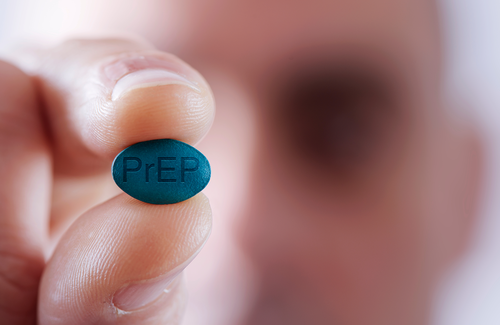
Key points
- When people take PrEP as it’s prescribed, it is extremely effective.
- Fewer than 20 breakthrough cases have been reported in scientific journals, out of about one million people taking PrEP worldwide.
- The highest risk factor of acquiring HIV while taking PrEP is poor adherence.
- When breakthrough infections have been reported, they have typically occurred when people on PrEP have been exposed to HIV that has resistance to the drugs in PrEP.
PrEP is an extremely effective way of preventing HIV, so long as you take it regularly, which ensures that there are high drug levels in the body at the time of exposure. Usually, when a person acquires HIV while taking PrEP, it’s because they haven’t taken it regularly, and drug levels in their bodies were insufficient to protect them.
Rarely, someone can acquire HIV while taking PrEP with adequate drug levels in their bodies – this is called a PrEP failure or a breakthrough infection, because HIV somehow breaks through the protection that PrEP ordinarily provides. Very few cases like this have been identified by scientists, although there are probably a few more that haven’t been reported. In fact, of about one million people taking PrEP worldwide, fewer than 20 breakthroughs have been reported in scientific journals.
About ten of the documented breakthrough cases occurred in people taking oral tenofovir disoproxil fumarate and emtricitabine (TDF/emtricitabine, sometimes also known as Truvada). So far, none have involved the more recently developed formulation of oral PrEP, which combines tenofovir alafenamide and emtricitabine (TAF/emtricitabine, also known as Descovy). This could be because far fewer people use this more recent formulation, or because it may provide better protection with suboptimal adherence. The number of breakthrough cases that occurred when taking oral PrEP is approximate because several cases could not definitively prove the person who acquired HIV had adequate drug levels (i.e. it remains possible that they acquired HIV because they didn’t take PrEP regularly enough).
Seven breakthrough cases have been reported in people taking injectable cabotegravir. It’s easier to prove the cases for injectable PrEP were true breakthroughs because the injections are administered every two months by a healthcare professional. In addition, they occurred during a clinical trial to evaluate the drug’s effectiveness at preventing HIV infection.
What causes breakthrough cases?
Almost all breakthrough cases with PrEP are thought to have occurred through having sex with someone who has both detectable levels of HIV and a form of HIV that has developed resistance to the drugs in PrEP. For the reports involving oral PrEP, genetic testing of the HIV acquired in all but one breakthrough case detected mutations associated with resistance to emtricitabine, tenofovir, or both. For reports involving injectable PrEP, all of the breakthrough cases involved resistance to cabotegravir.
However, resistance mutations can also develop when a person taking PrEP with suboptimal adherence acquires HIV without resistance but continues to take PrEP. After the infection, HIV can develop resistance because the drugs in PrEP do not fully suppress the virus. Because resistance can come either from acquiring HIV that already has it or from developing mutations after acquiring HIV, it is sometimes difficult to evaluate which came first.
In some cases, the person who transmitted the virus to the person on PrEP is known and also has genetic testing. If the person who was taking PrEP has the same mutations as the person who transmitted the virus to them, that provides stronger evidence that the breakthrough infection resulted from a resistant strain (as opposed to the mutations developing after infection). But often, that information isn’t available.
Also, if the person on PrEP has drug resistance mutations that are not associated with the drugs in PrEP but instead with antiretroviral medications that aren’t included in PrEP, that could also be evidence of a breakthrough case.
Even with evidence like that, it can still be difficult to determine whether people had adequate drug levels at the time of infection, which makes it difficult to assess whether infections are truly because of ‘breakthrough’. Nonetheless, it’s less likely that oral PrEP would protect against HIV that is already resistant to its component drugs. That means that HIV with resistance to the drugs in PrEP has likely caused at least some of the breakthrough cases reported with oral PrEP.
It’s worth noting that three of the people with reported breakthrough infections despite oral PrEP (two of whom had HIV with resistance mutations) also had rectal lymphogranuloma venereum (LGV), which is a type of chlamydia. Though there’s no direct evidence, clinicians in one of the cases hypothesised that inflammation of rectal tissue may have created localised areas of tissue that were more vulnerable to HIV infection.
With injectable PrEP, adherence is easier to ascertain because a healthcare professional administers the injection. In the seven reported breakthrough cases involving injectable PrEP, all seven had resistance to cabotegravir. However, in two of the seven people, drug levels dipped unexpectedly after the first injection, which raises the possibility that, in some people, cabotegravir takes longer to reach tissues (e.g. rectal and vaginal) where the drug protects against HIV infection. More research needs to be conducted to explain differences in drug levels and find out how often they occur. Despite this, the clinical trial results showed cabotegravir to be more effective than oral PrEP at preventing HIV infections – because participants missed fewer doses.
How common is resistance?
Being exposed to HIV that has already developed this type of resistance is rare, especially considering that someone with undetectable levels of HIV cannot transmit the virus, regardless of whether they have a form of HIV that’s resistant to the drugs in PrEP. For a breakthrough infection to be possible, a person has to be exposed both to detectable levels of HIV and a version that has resistance to the form of PrEP they’re taking.
A study at the University of Washington found that in about 4000 people with HIV in Seattle, less than 0.3% had detectable levels of HIV with resistance to emtricitabine and tenofovir.
According to a World Health Organization survey, out of 30 countries in the global South, the prevalence of HIV with drug resistance to tenofovir was 1.6% and to emtricitabine was 1.7%, although it was as high as 8% in a few countries. Another study that took place in four African countries found that out of 104,000 people on oral PrEP, just 229 people acquired HIV (most because of poor adherence), and just 27 people acquired HIV where genetic testing revealed resistance mutations (though it’s unclear whether they acquired HIV because of the mutations or whether the mutations formed after infection).
Although no similar studies don’t exist for cabotegravir because it’s much newer, these results confirm the low likelihood of acquiring HIV while taking PrEP with good adherence.
Conclusion
It’s very difficult to prove whether someone taking oral PrEP acquired HIV with adequate levels of PrEP drugs in their system because measurements are needed very close to when the infection occurred. In most of the breakthrough cases involving oral PrEP, it may never be known why they occurred.
For injectable PrEP, more research needs to be conducted to explain why drug levels dip unexpectedly in certain people and how often it happens. For both oral and injectable PrEP, the mostly likely cause of breakthrough infections is being exposed to detectable levels of HIV that has also developed resistance to the drugs in PrEP.
The biggest risk factor to acquiring HIV while taking PrEP is not adhering to the recommended frequency, resulting in inadequate drug levels in the body. If drug levels are adequate, PrEP prevents nearly 100% of HIV infections.

